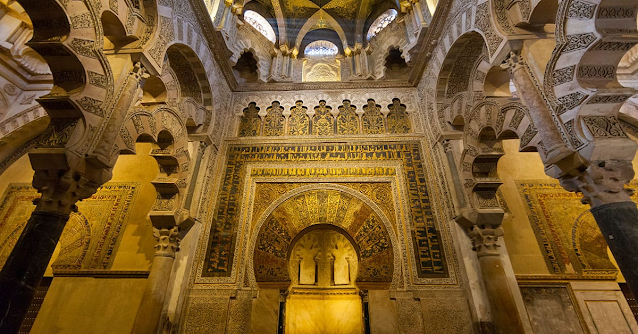The Renaissance was a cultural, artistic, scientific and philosophical movement that lasted from the 14th to the 17th centuries in Europe. The Renaissance emerged under the leadership of humanist thinkers who worked to rediscover and develop the heritage of Ancient Greek and Roman civilizations. However, not only Ancient Greece and Rome but also Muslim culture had a significant impact on the emergence of the Renaissance.
The Muslim Culture
Muslim culture has spread over a wide geography by conquering regions such as the Middle East, North Africa, Spain, Sicily and Anatolia since the 7th century. Muslims created a rich civilization by interacting with the local cultures in the regions they conquered. Muslims also preserved and developed the works of the Ancient Greek and Roman civilizations in fields such as science, philosophy, mathematics, medicine, astronomy, architecture, literature and art by translating them into Arabic.
The contribution of Muslim culture to the Renaissance is twofold: First, Muslims inspired Europe with the works of science, philosophy, mathematics, medicine, astronomy, architecture, literature and art they produced. Secondly, the works of Ancient Greece and Rome, which reached Europe through Muslims, helped Renaissance thinkers rediscover these civilizations.
Examples of the contribution of Muslim culture to the Renaissance are numerous. For example:
- In the field of mathematics, Arabic numerals, the number zero and the decimal system were introduced to Europe by Muslims. In addition, the works of the Muslim mathematician Al-Khwarizmi, who is considered the founder of algebra, were translated into Latin and taught in Europe.
- In the field of philosophy, most of Aristotle's works have been translated and interpreted into Arabic. In particular, Muslim philosophers such as Ibn Sina and Ibn Rushd developed and criticized Aristotle's views on subjects such as logic, metaphysics and ethics. These works were translated into Latin and reached the Renaissance philosophers.
- In the field of medicine, Muslim physicians improved Ancient Greek medicine and found new methods, drugs and surgical techniques. For example, medical books written by physicians such as El Razi (Razes), Avicenna (Avicenna) and El Zahrawi (Abulcasis) were translated into Latin and used in Europe.
- In the field of astronomy, Muslims established observatories, studied the movements of the sky and created new star maps. They also developed and introduced tools such as sundials, astrolabes and compasses to Europe.
- In the field of architecture, Muslims have created a unique architectural style using features such as domes, arches, minarets, tiles, geometric and floral motifs. This style spread to Europe with structures such as mosques, palaces, madrasahs and bridges, especially seen in Spain and Sicily.
- In the field of literature and art, Muslims have produced works in genres such as poetry, stories, fairy tales, history, geography and biography. For example, works such as One Thousand and One Nights, Hayy bin Yakzan, Al Hamasa were translated to Europe and inspired Renaissance writers. They also produced superior works in arts such as carpets, ceramics, glass, metalwork, calligraphy and illumination.
Reasons for the contribution of Muslim culture to the Renaissance are,
- Muslims succeeded to protect and enrich the local cultures in the regions they conquered
- Muslims respected and translated the works of Ancient Greek and Roman civilizations
- Muslims attach importance to science and philosophy and do so much research in these fields
- Muslims establish trade and diplomatic relations with Europe
- Muslims ruled for a long time in regions such as Sicily and Andalusia
- Muslims had direct contact with Europeans during the Crusades
In conclusion, although the Renaissance was a European movement, it was also influenced by Muslim culture. With the knowledge and inspiration they received from Muslim culture, Renaissance thinkers revitalized the ancient Greek and Roman civilizations and contributed to the cultural, artistic, scientific and philosophical development of Europe.









Comments
Post a Comment